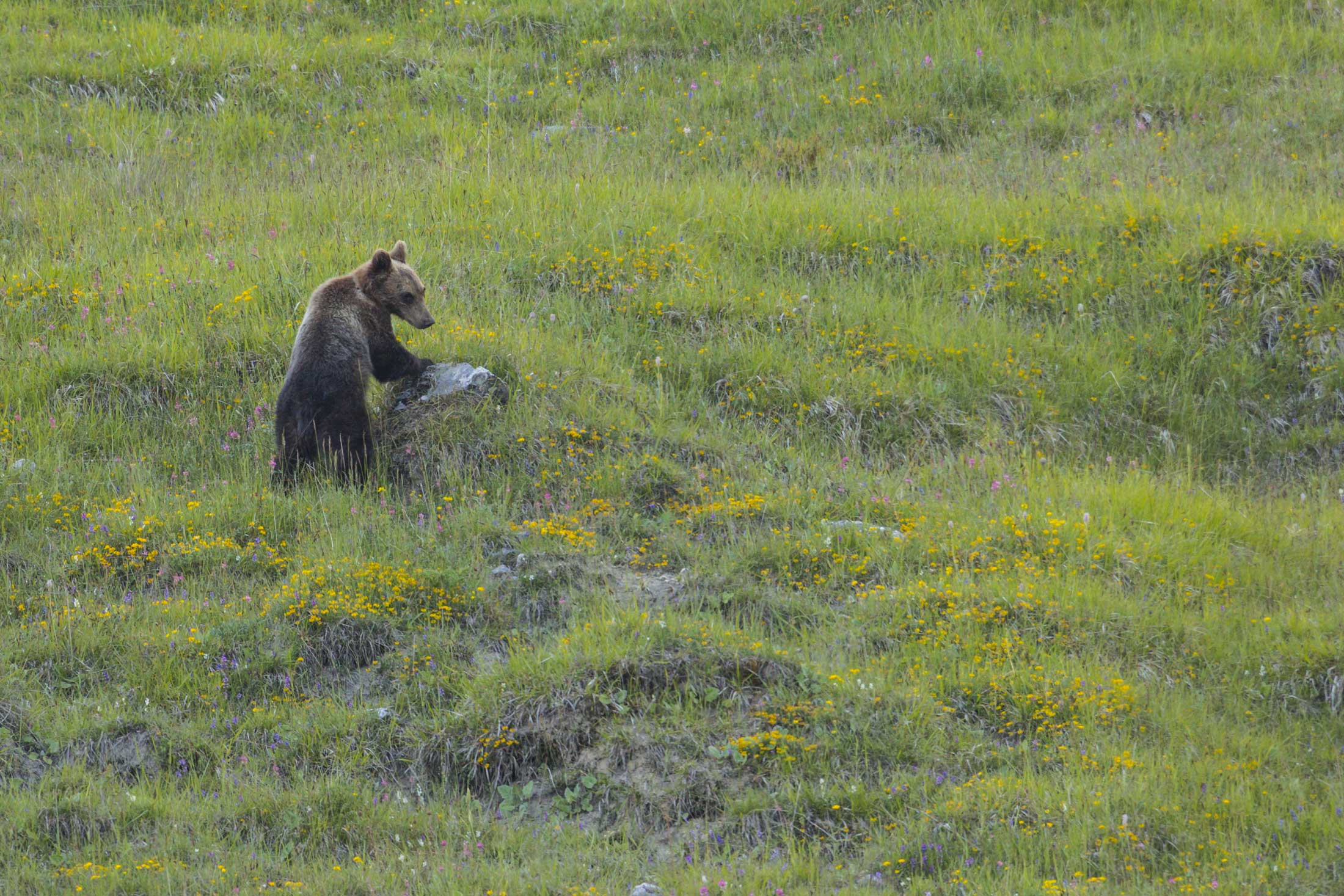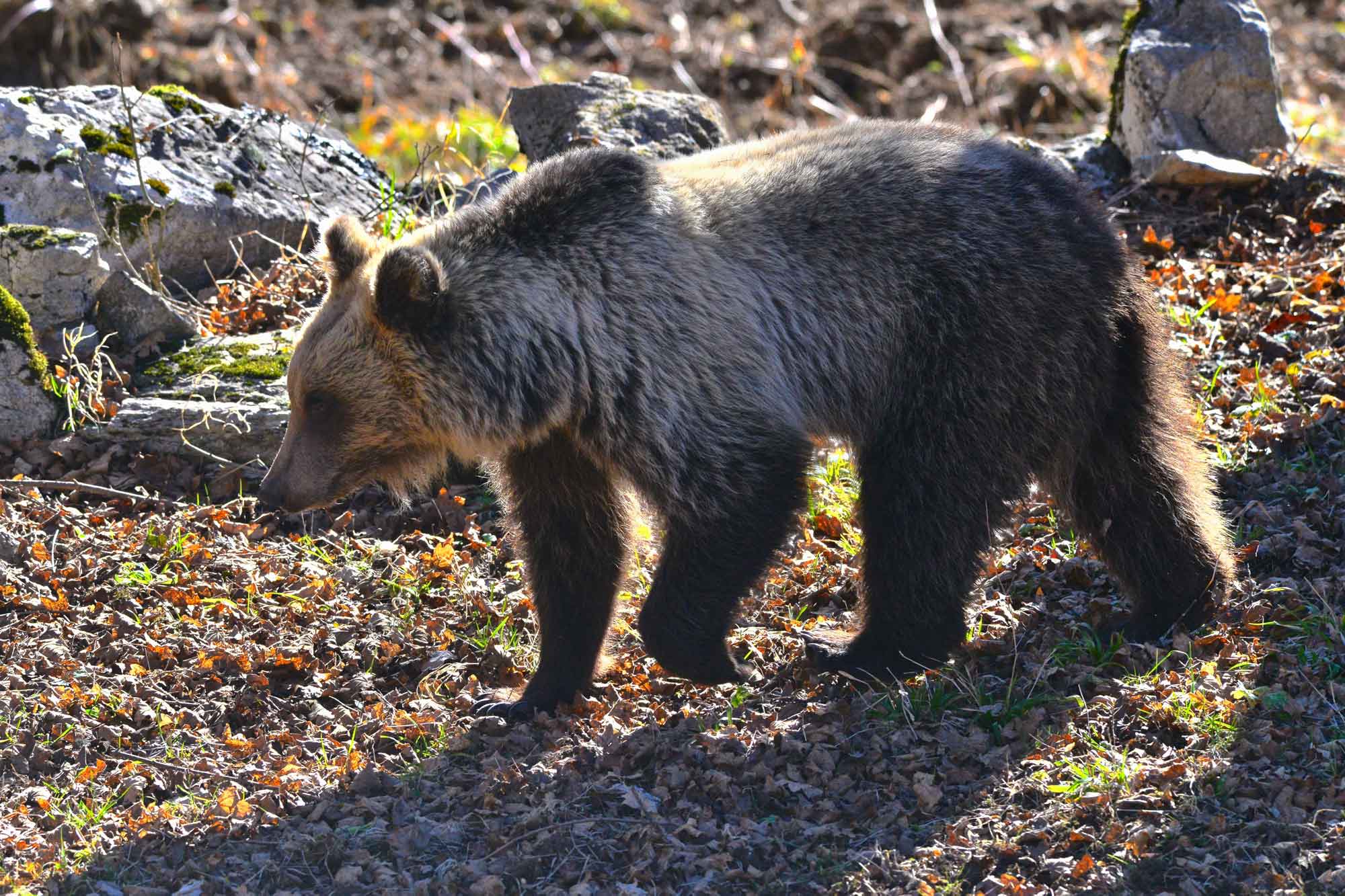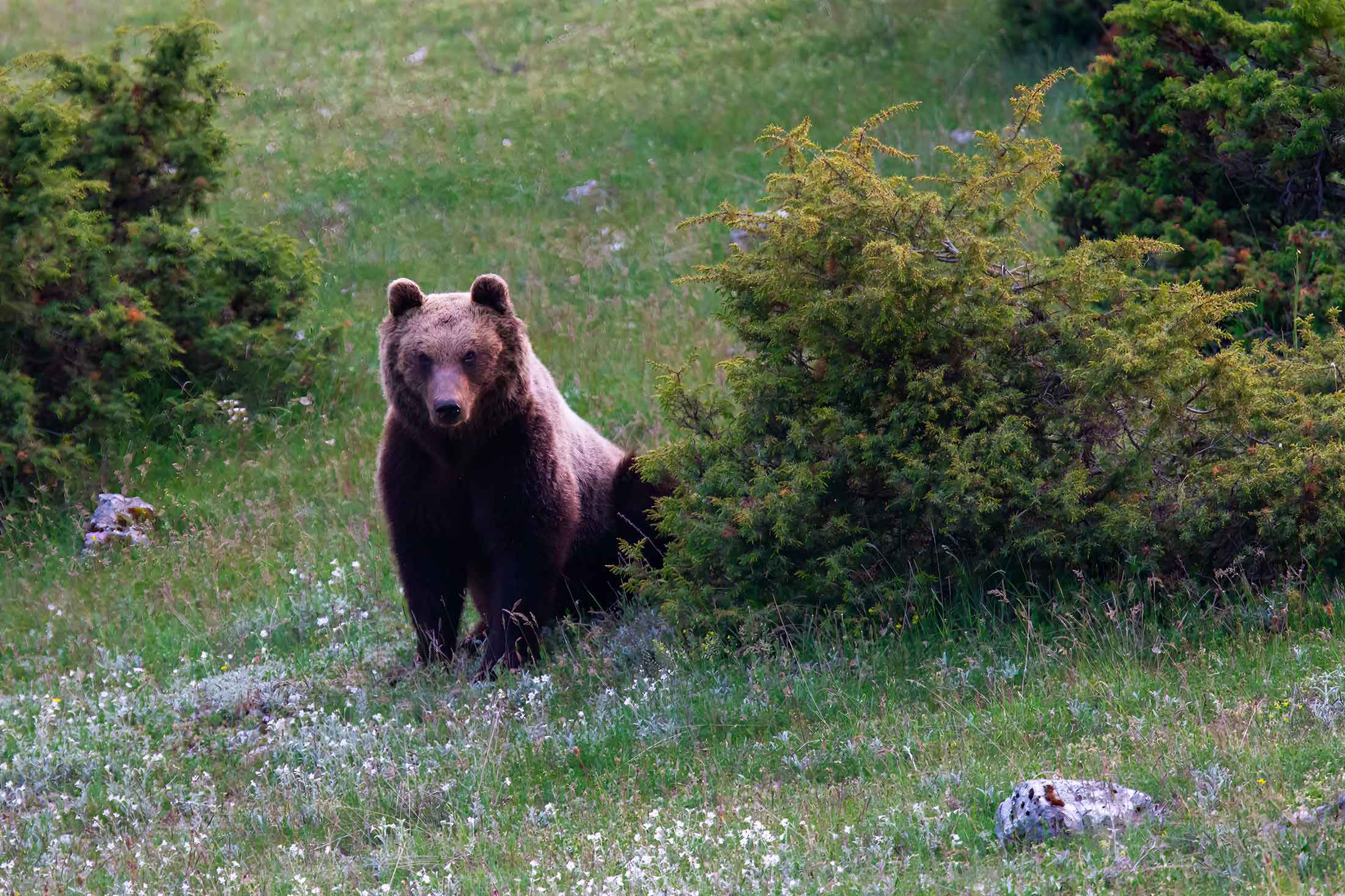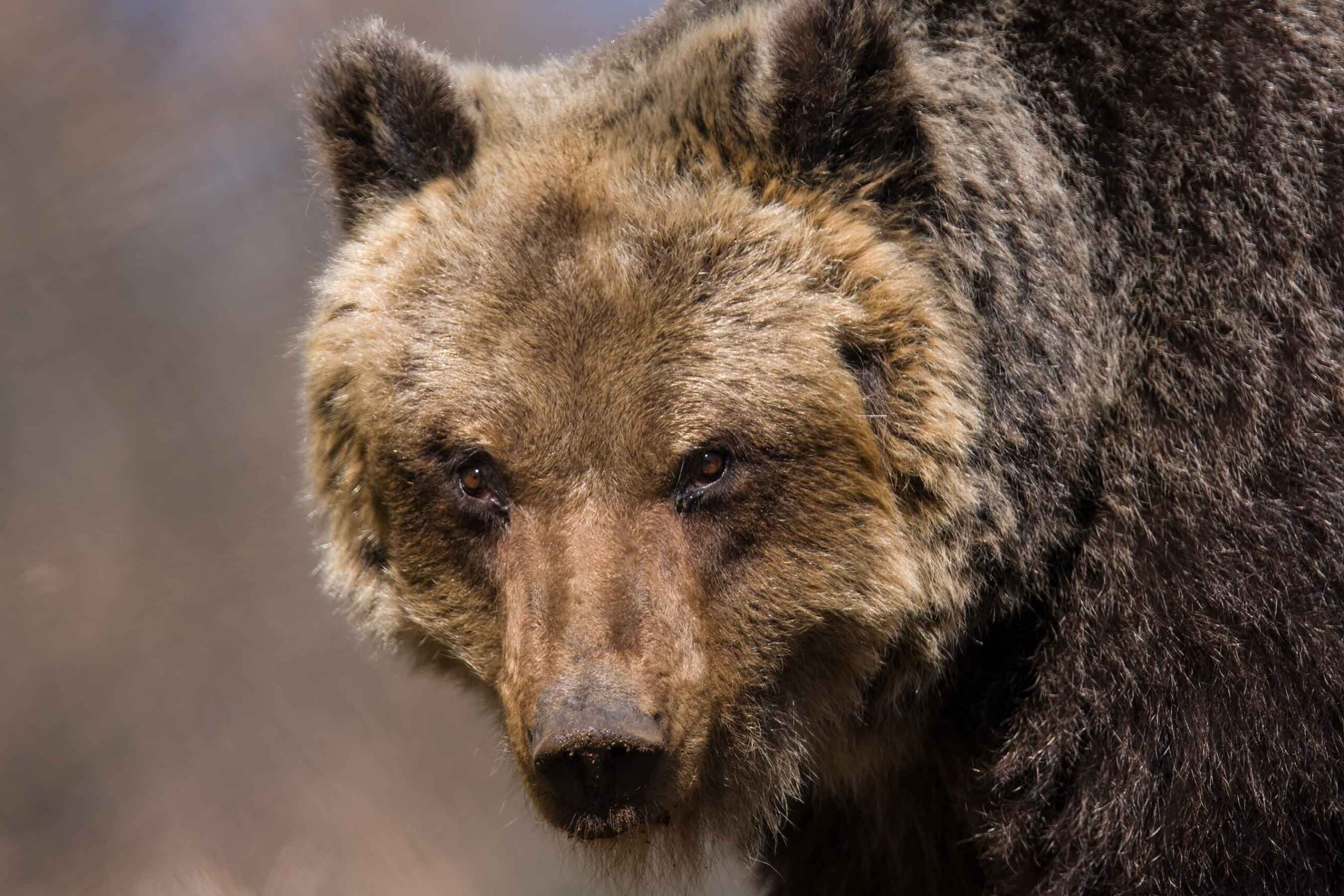Conservation
learn more/ the Marsican brown bear / conservation
Why protect the bear?
So many could be the answers: because of its uniqueness, because of its aesthetic value, because it is an economic resource for local people, because the law says so, because it is a matter of civilization, because it is a challenge, but above all because it is an endangered species.
Nature conservation is a moral obligation that we cannot and should not shirk.
What are the root reasons for this obligation?
These are ecocentric (intrinsic value of species) and anthropocentric (utility value to humans) motivations, but the former must weigh overwhelmingly over the latter.
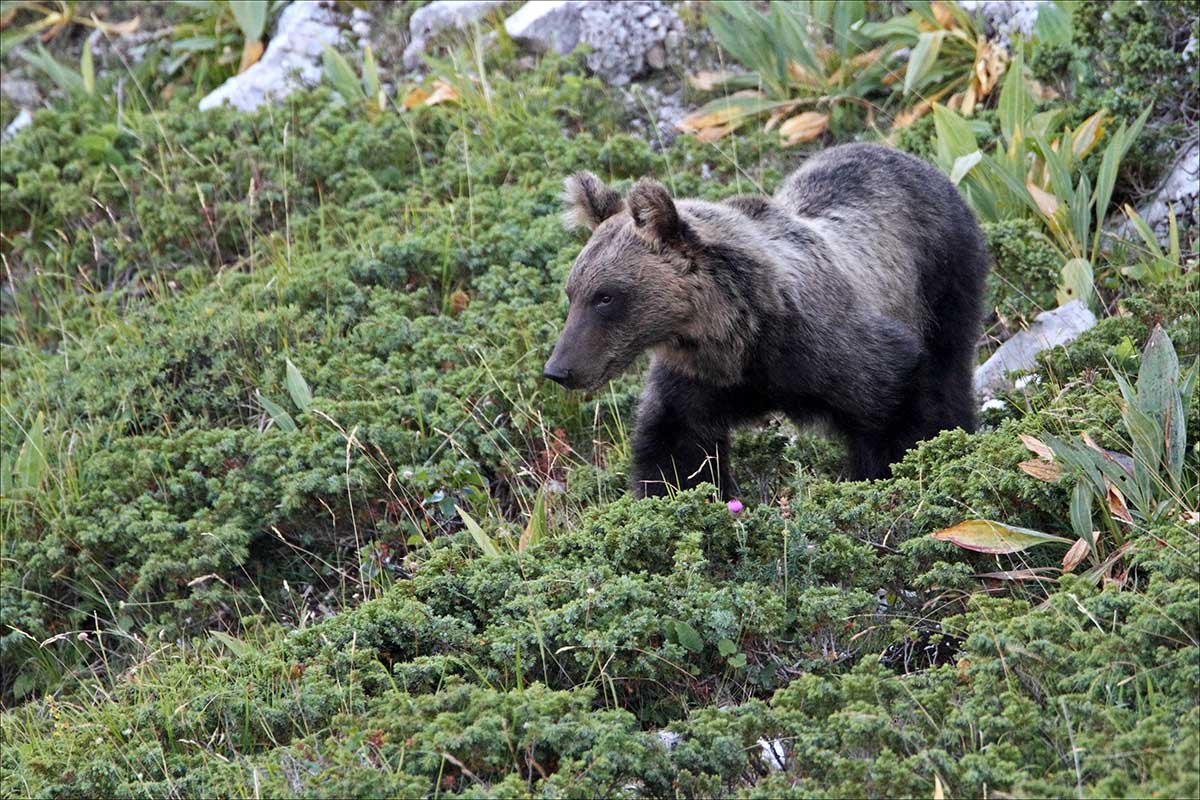
Ecocentric motivations
The Marsican bear has the right to evolve according to the natural timing of evolution.
All species evolve, and the vast majority of them have died out at some point; it is a natural process and an integral part of evolution. However, it is estimated that the current extinction rate is 100-1000 times higher than that of past geological eras due to humans. We are faced with forcing a process that is the foundational basis of life in its deepest essence. The right to evolution does not belong only to Homo sapiens but is a universal right.
Human-induced disturbances are violating the spatial and temporal scale of natural disturbances.
Life on earth has been marked by major disruptive events, such as volcanic eruptions, meteorite impacts, and climatic fluctuations. These events marked the evolutionary path of living things and occurred thousands or more often millions of years apart, randomly. In contrast, human-induced disturbances are much more frequent than natural ones and occur with extreme regularity or even continuity as well as on a very large scale (think of deforestation, the process of urbanization, the process of river regulation). This violation of the time scale and spatial scale of perturbations destroys ecosystems, not giving ecosystems time to reach their natural equilibrium, effectively preventing natural evolution.
Resilience of ecosystems with higher species richness.
Many scholars believe that ecosystems with higher species richness and greater complexity are able to maintain their efficiency when subjected to disturbances more than species-poor ecosystems. Ecosystems are made up of networks of relationships among all its components; the denser the network, the better the ecosystem will be able to withstand a disturbance.
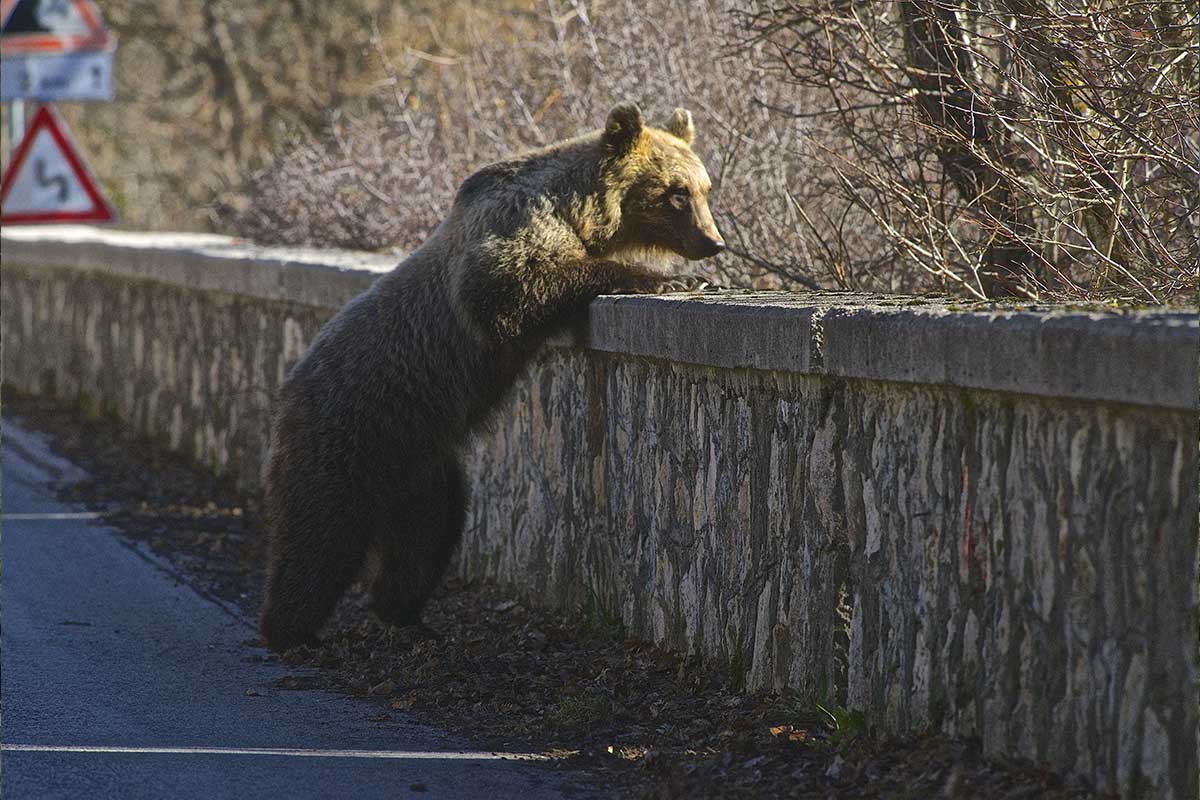
Anthropocentric motivations
Spiritual value of biodiversity.
Encountering a bear in a beech forest or following the flight of an eagle with one’s gaze are phenomena that arouse an emotion in man and enrich his spirit. A great many living things, with their ecosystems, underlie several crucial aspects of religions and art and have always accompanied humans since prehistoric times. Conservation of biodiversity thus brings spiritual benefits to humans.
Economic value related to resources and services
Ecosystems possess enormous economic value related to the raw materials and, in general, the resources they provide: the moment these resources are overexploited (timber, fish stocks, soil) and no longer have time to self-regenerate, humans are faced with enormous production crises that generate very strong social clashes and economic problems. For example, one of the most important natural resources is the pharmacological use of plants and many other organisms: it was from living things that the active ingredients were discovered that led to the production of vaccines and drugs that are indispensable to human health today; preserving biodiversity implies preserving other species that are currently unknown to us but could be useful in the future for new active ingredients. Ecosystem processes underlie our daily life and health: disrupting these processes implies great harm to the economy and human social life.
Recreational value
Recreational value derives from the spiritual value of biodiversity mentioned above (the pleasure of seeing an animal or landscape, the pleasure of walking in the silence of a forest, the pleasure of hunting a fox, and the like) and the fact that some individuals exploit this value economically; in fact, the hunter is willing to pay to have a hunting license, a cetacean lover is willing to pay to go for direct observation of humpback whales, etc…
The Marsican Bear Protection Action Plan.
The
Action Plan for the Protection of the Marsican Bear (PATOM)
is a declaration of intentions and commitments between the Ministry of Environment, Regions and Authorities.
The Action Plan by its nature cannot produce acts having the force of law. In order for the measures in the plan to be implemented, these must be made effective by political passage at the regional, provincial, municipal or protected area level by the issuance of laws, regulations, resolutions, ordinances and other acts having regulatory force.
They are therefore of instruments closely linked to the political will of local and regional administrators although the details of each measure must be worked out by specialists in bear biology and ecology and veterinary science, environmental police, and protected wilderness planning.
Measures planned in the PATOM 2022-2024
- Coordinated synergistic damage prevention and management activities which includes.
- Inventory and securing of trophic sources.
- Confident and problematic bear management
- Agree on initiatives to be implemented with local governments and agencies
- Periodic verification of the results obtained
- Establishment of a contiguous area in all Parks falling within the bear’s range of presence, in which regulations for the management of anthropogenic activities are in force, in particular:
- Regulation of hunting activity
- Regulation of truffle harvesting
- Initiatives for bear damage prevention and compensation
- Prevention of risks related to vehicular traffic., it is hoped to apply the activities under the LIFE Safe Crossing project also in the areas of the Sirente-Velino Natural Regional Park, Alto Molise, Matese National Park and the Collemeluccio-Montedimezzo MAB Reserve.
- Prevention and management of risks related to disease transmission, with special reference to health control of livestock grazing in the wild and management of dogs and stray animals.
- Implementation of genetic and population monitoring within the entire bear range
- Implementation of measures to counter anthropogenic mortality and disturbance and activities aimed at managing confiding bears, through the following measures:
- Improved countering the use of poisons
- Implement coordination between the structures in charge of land surveillance, such as Carabinieri Foresters, Park Guards and Provincial Police
- Review of protocol for confiding bears.

Save the Bear
Association for the Conservation of the Marsican Brown Bear ONLUS
Olive Park Street, 11
65015 Montesilvano (PE)
Italy
VAT NUMBER: 02189990688
CF: 91117950682
MAIL: info@salviamolorso.it
PEC: ass.salviamolorso@pec.it
Donate now
Contact us
Privacy Policy

